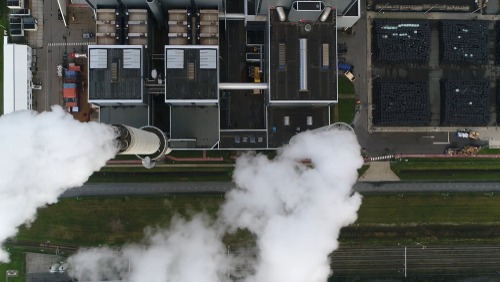LG&E and KU partner with University of Kentucky on new carbon capture research

Researchers at the University of Kentucky recently teamed up with Louisville Gas & Electric (LG&E) and Kentucky Utilities (KU) to investigate reducing the amount of carbon dioxide (CO2) in the atmosphere through carbon-capture technology.
Such research has been undertaken by many for years in the hopes of clamping down on one of the primary drivers of the greenhouse effect. However, this latest effort focuses not only on gas capture but on increasing operational efficiencies in manufacturing and electric generating processes.
“We’ve already installed environmental controls over the past several decades at our generating stations that have improved air quality and reduced emissions,” Aron Patrick, manager of technology research and analysis at LG&E and KU Energy, said. ”Our next engineering challenge is looking at how we get rid of carbon dioxide. With our parent company, PPL Corporation, we’ve set a goal of having net-zero emissions by 2050 and an 80 percent reduction in our greenhouse gas emissions by 2040. It’s a pretty big challenge.”
One research effort will study capturing CO2 emissions at natural gas combined-cycle power plants through tests at the Cane Run Generating Station. A second focuses on a bench-scale, direct-air-capture system capable of capturing carbon from the air and producing hydrogen from it. The latter is being conducted in partnership with the electric utility consortium known as the Electric Power Research Institute (EPRI) and its Low Carbon Research Institute.
“The ability to test our technology at an operating power plant is critical to the development of new knowledge,” Heather Nikolic, research program manager for the University of Kentucky, said. “You can learn a lot in a traditional laboratory setting, but such learning has its limitations. If you want to determine how something is going to work in a real-life situation, you have to operate in a real-life situation.”
LG&E and KU noted that these projects will bring economic activity to Kentucky and have already brought in federal research funds.
